Abstract
Anaerobic lake sediment incubated in vitro was investigated for its ability to mimic natural in situ sediment activities, using rate of methane production for the comparison. Two lakes with different rates and seasonal patterns of methanogenic activity were compared. There was good agreement (at the 97.5% confidence level) between rates of in situ methane release and initial (lasting an average of 120 h) rates of production measured in vitro in surface (0- to 3-cm) sediment. Evidence from this study, and others, indicated that it is the in situ surface sediment methane production which is primarily responsible for maintaining in situ methane release, and thus the above agreement was what was expected if surface in situ activity was maintained in vitro. When deeper sediment was investigated, however, the sum of in vitro rates from 0 to 20 cm (measured in 1.5- to 3-cm intervals) was much higher than in situ release rates and would have resulted in an impossibly high volume of gas. The extra gas could not have been stored within the sediments. We conclude that the in situ methanogenic activity of the 0- to 3-cm anaerobic surface sediments could be preserved during removal and laboratory incubation. However, similar treatment of deeper sediment appeared to stimulate methanogenic activity.
Full text
PDF
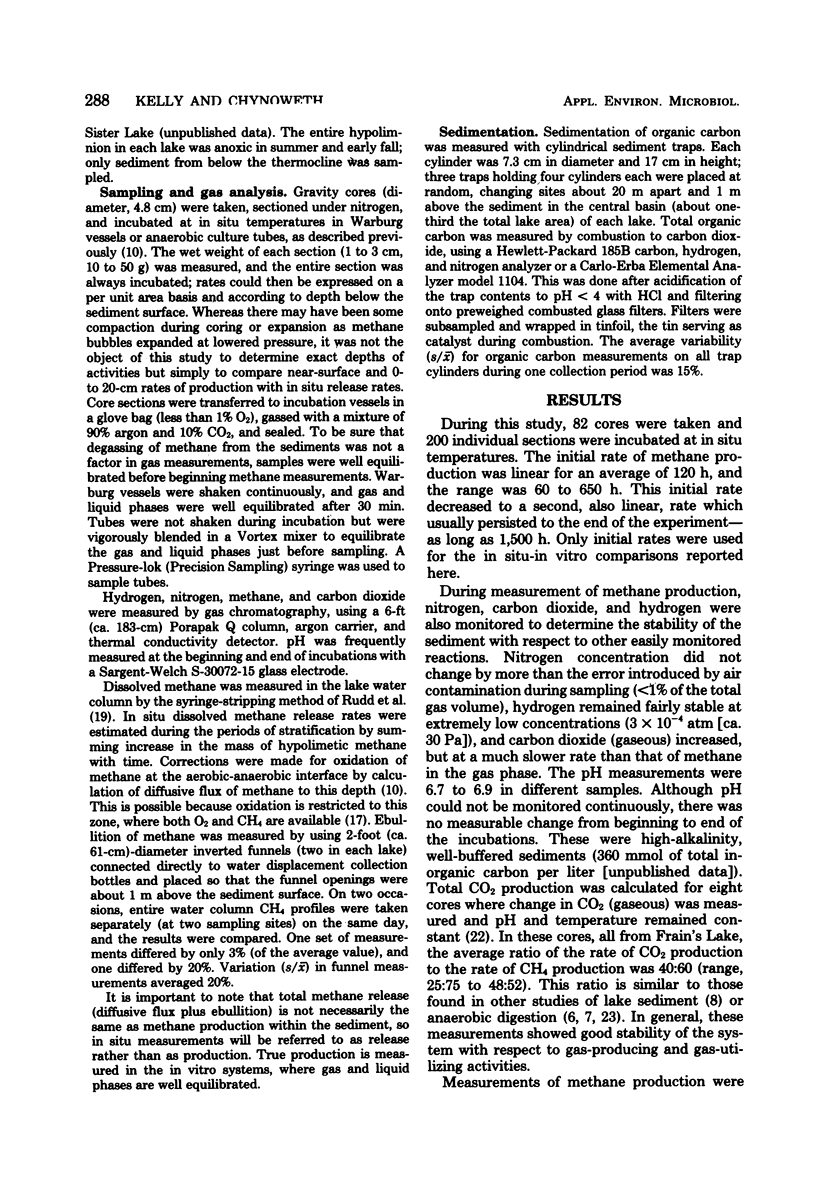
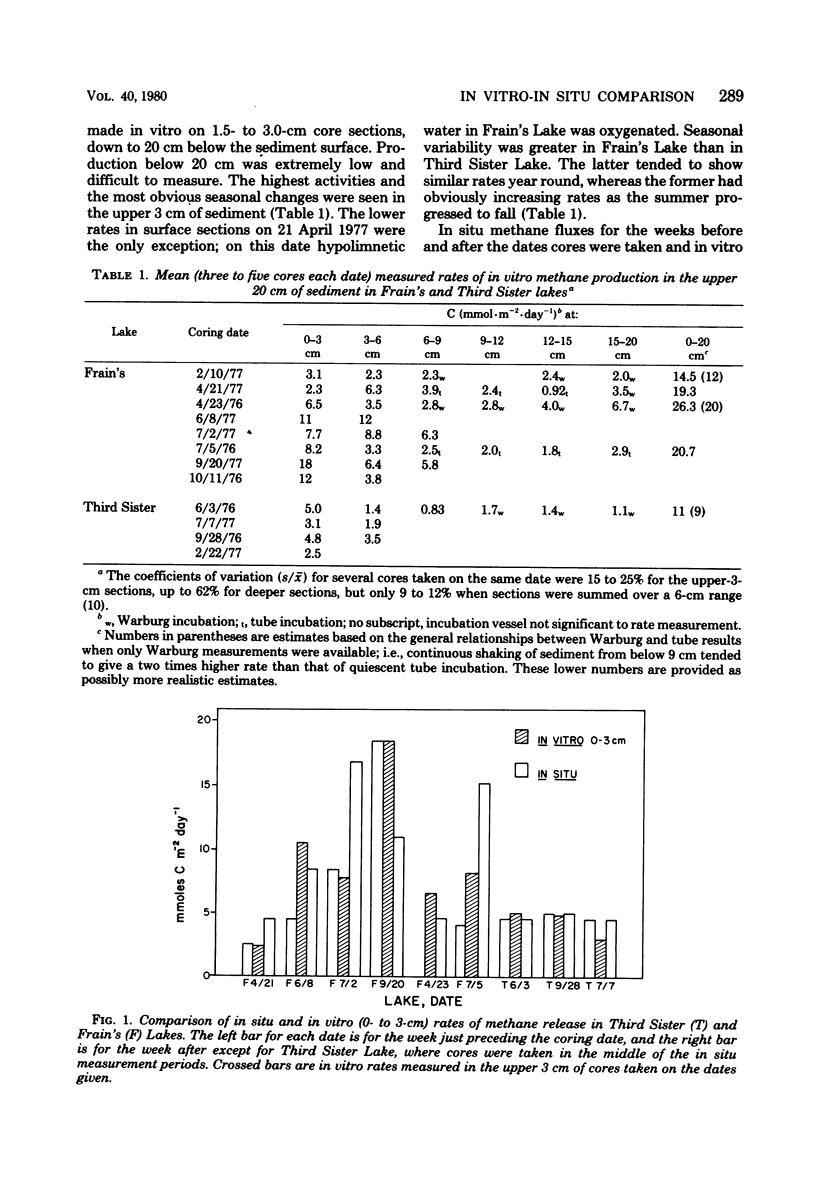
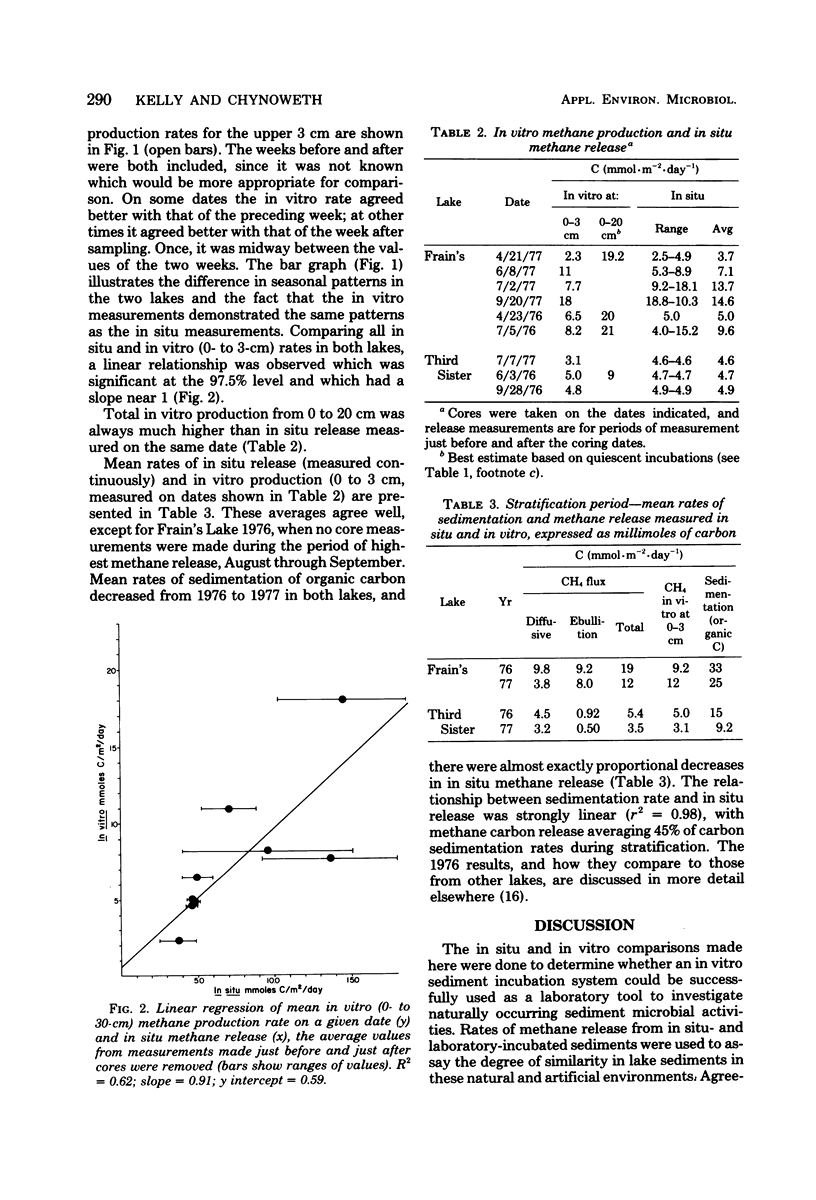
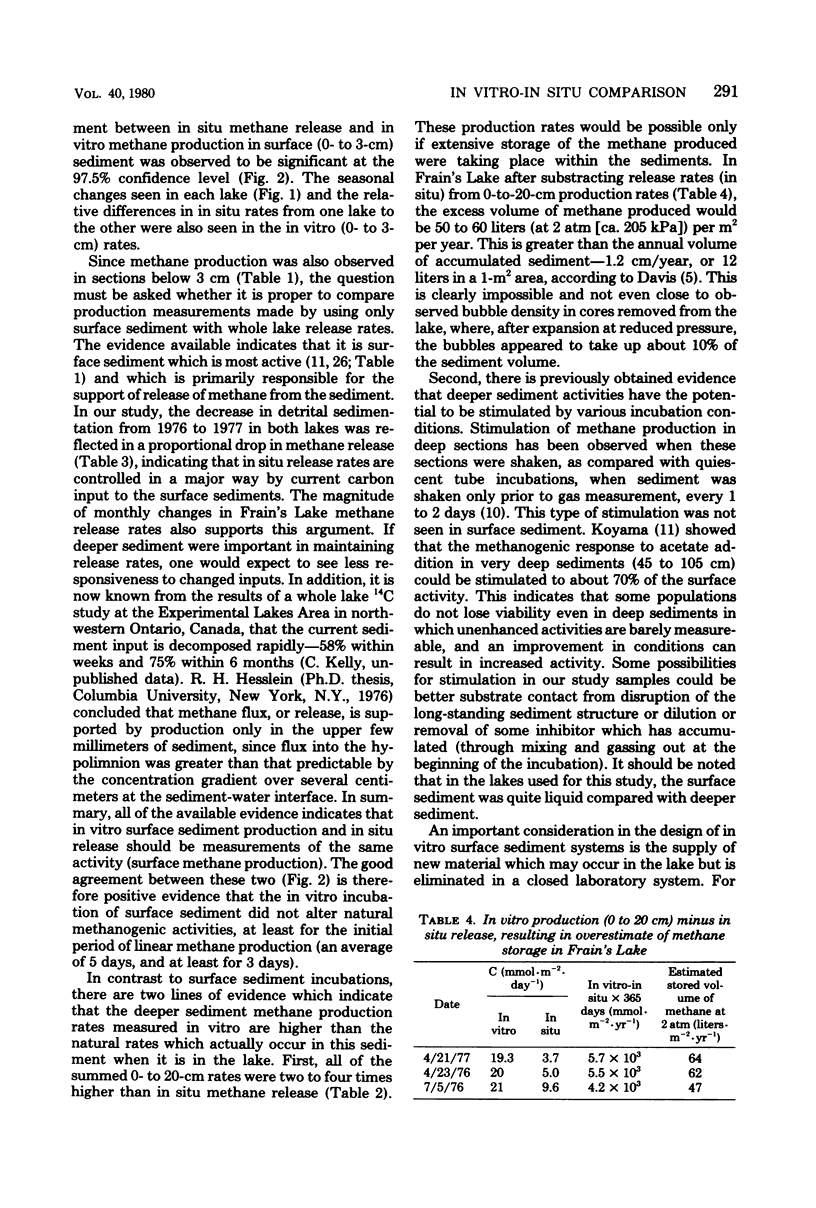
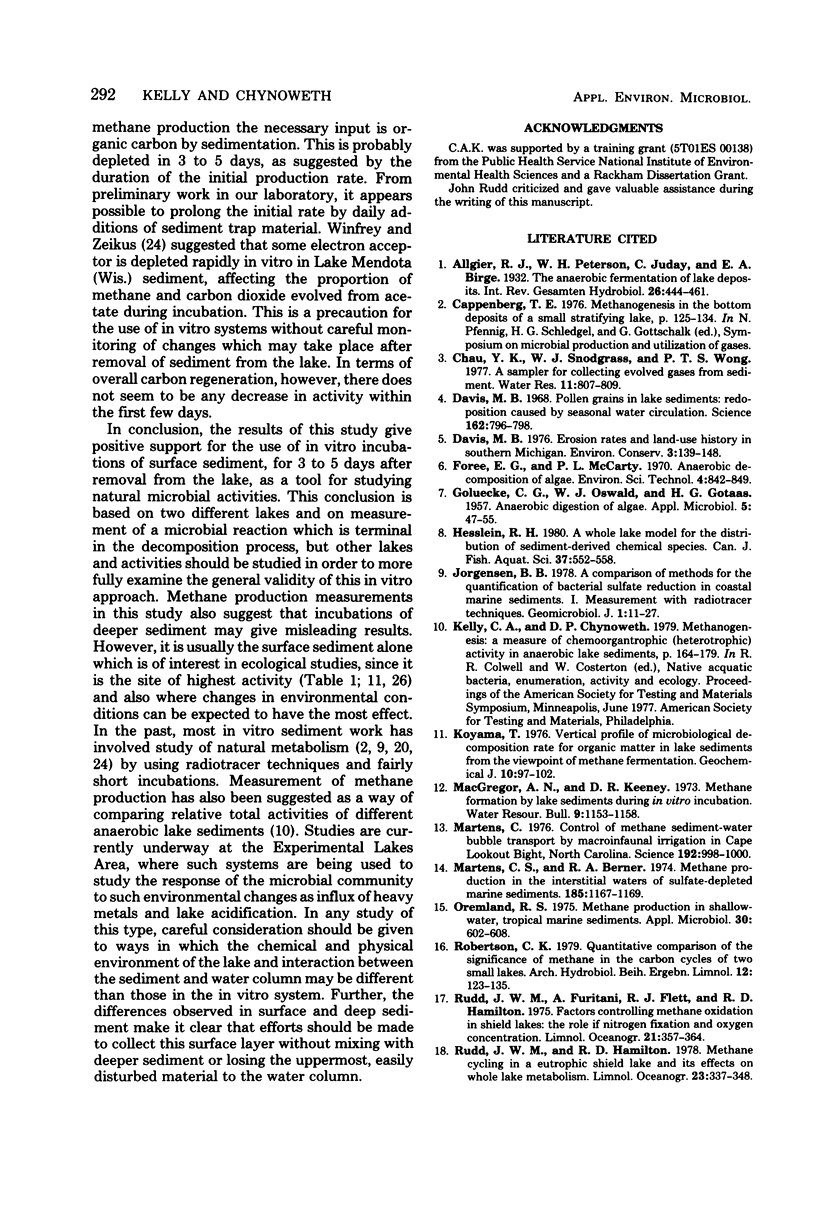

Selected References
These references are in PubMed. This may not be the complete list of references from this article.
- Davis M. B. Pollen grains in lake sediments: redeposition caused by seasonal water circulation. Science. 1968 Nov 15;162(3855):796–799. doi: 10.1126/science.162.3855.796. [DOI] [PubMed] [Google Scholar]
- GOLUEKE C. G., OSWALD W. J., GOTAAS H. B. Anaerobic digestion of Algae. Appl Microbiol. 1957 Jan;5(1):47–55. doi: 10.1128/am.5.1.47-55.1957. [DOI] [PMC free article] [PubMed] [Google Scholar]
- Martens C. S., Berner R. A. Methane production in the interstitial waters of sulfate-depleted marine sediments. Science. 1974 Sep 27;185(4157):1167–1169. doi: 10.1126/science.185.4157.1167. [DOI] [PubMed] [Google Scholar]
- Martens C. S. Control of methane sediment-water bubble transport by macroinfaunal irrigation in cape lookout bight, north Carolina. Science. 1976 Jun 4;192(4243):998–1000. doi: 10.1126/science.192.4243.998. [DOI] [PubMed] [Google Scholar]
- Oremland R. S. Methane production in shallow-water, tropical marine sediments. Appl Microbiol. 1975 Oct;30(4):602–608. doi: 10.1128/am.30.4.602-608.1975. [DOI] [PMC free article] [PubMed] [Google Scholar]
- Powell M. R., Doebbler G. F., Hamilton R. W., Jr Serum enzyme level changes in pigs following decompression trauma. Aerosp Med. 1974 May;45(5):519–524. [PubMed] [Google Scholar]
- Strayer R. F., Tiedje J. M. Kinetic parameters of the conversion of methane precursors to methane in a hypereutrophic lake sediment. Appl Environ Microbiol. 1978 Aug;36(2):330–340. doi: 10.1128/aem.36.2.330-340.1978. [DOI] [PMC free article] [PubMed] [Google Scholar]
- Winfrey M. R., Zeikus J. G. Anaerobic metabolism of immediate methane precursors in Lake Mendota. Appl Environ Microbiol. 1979 Feb;37(2):244–253. doi: 10.1128/aem.37.2.244-253.1979. [DOI] [PMC free article] [PubMed] [Google Scholar]
- Zeikus J. G. The biology of methanogenic bacteria. Bacteriol Rev. 1977 Jun;41(2):514–541. doi: 10.1128/br.41.2.514-541.1977. [DOI] [PMC free article] [PubMed] [Google Scholar]
- Zeikus J. G., Winfrey M. R. Temperature limitation of methanogenesis in aquatic sediments. Appl Environ Microbiol. 1976 Jan;31(1):99–107. doi: 10.1128/aem.31.1.99-107.1976. [DOI] [PMC free article] [PubMed] [Google Scholar]


